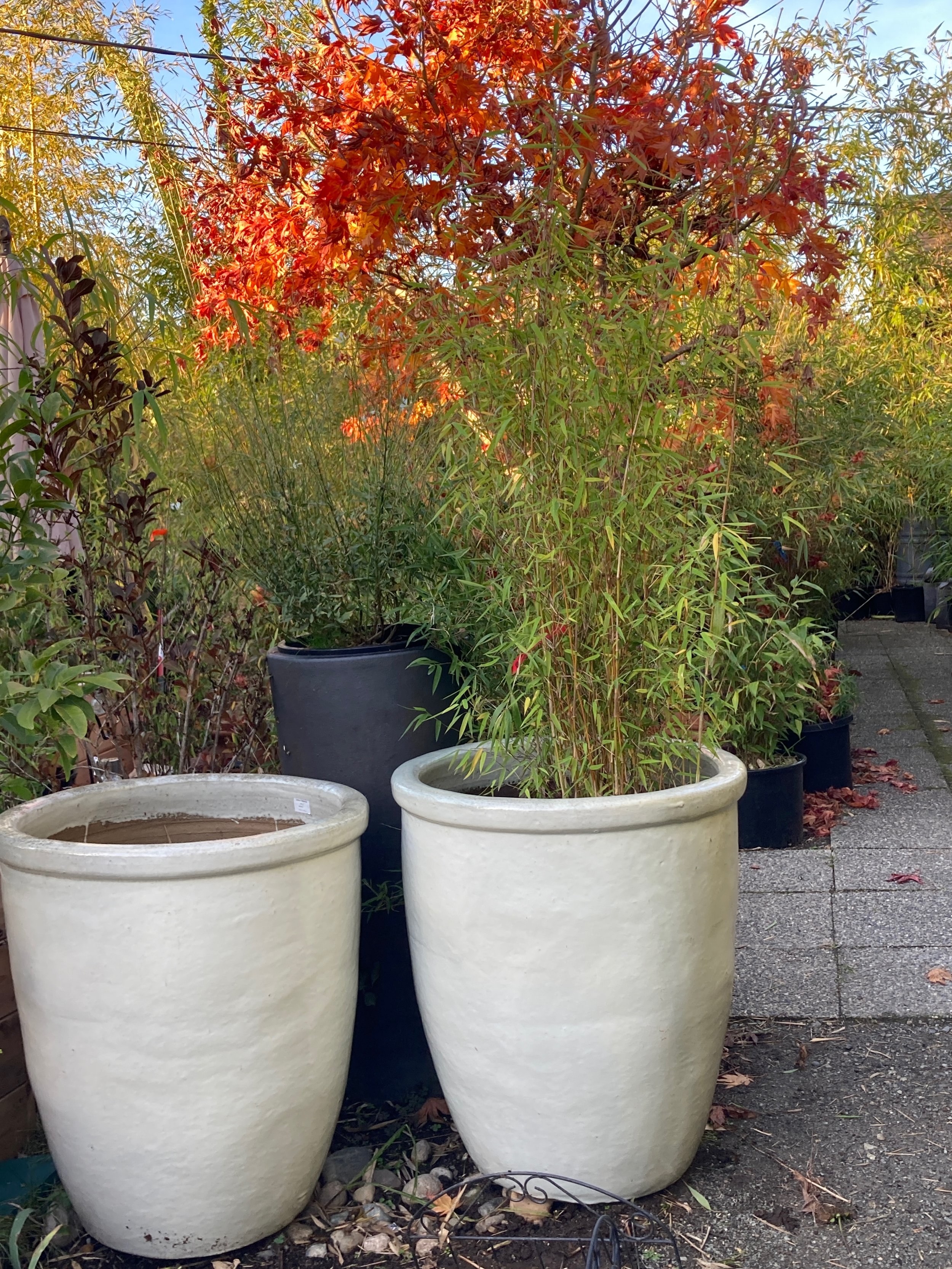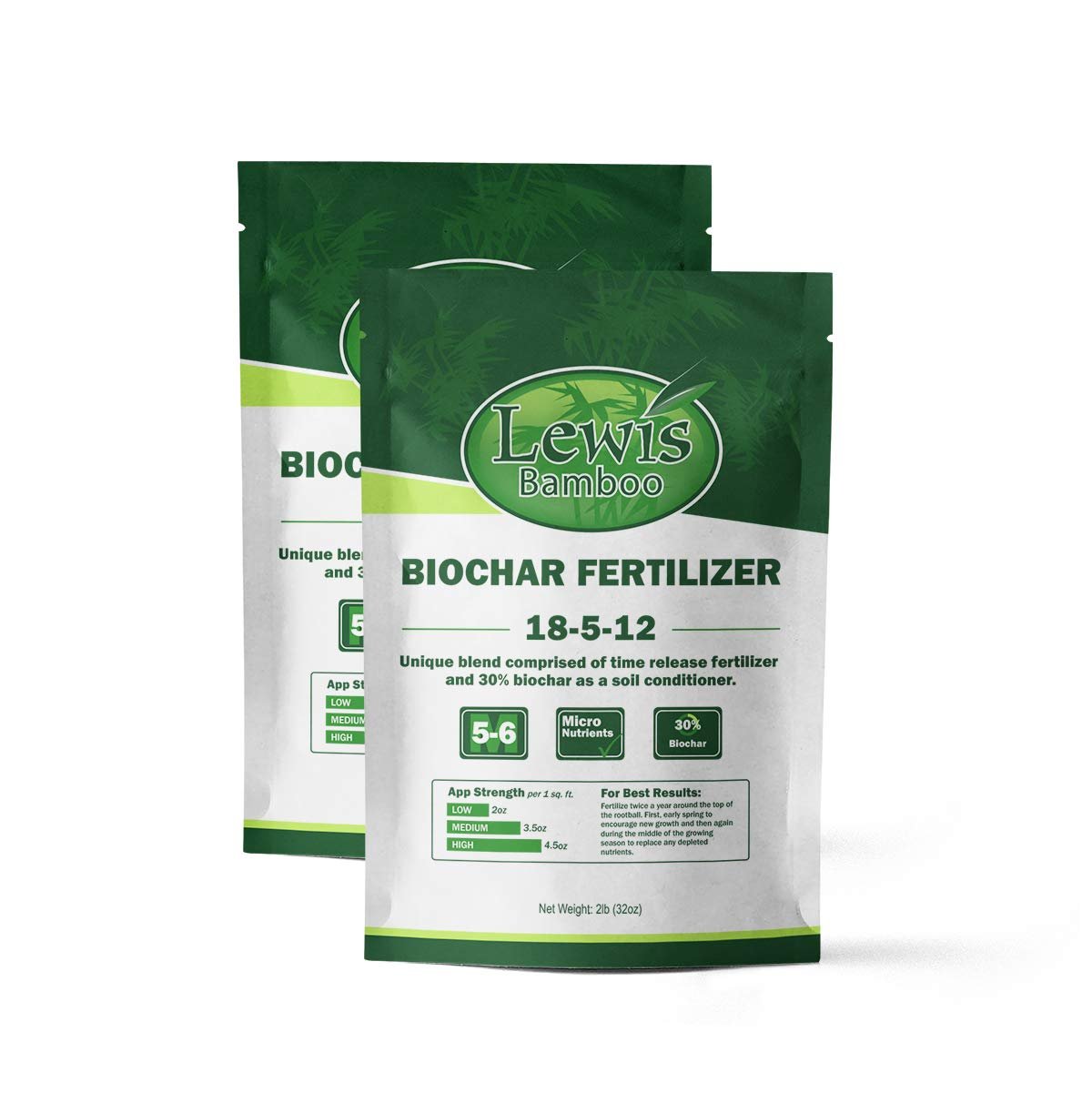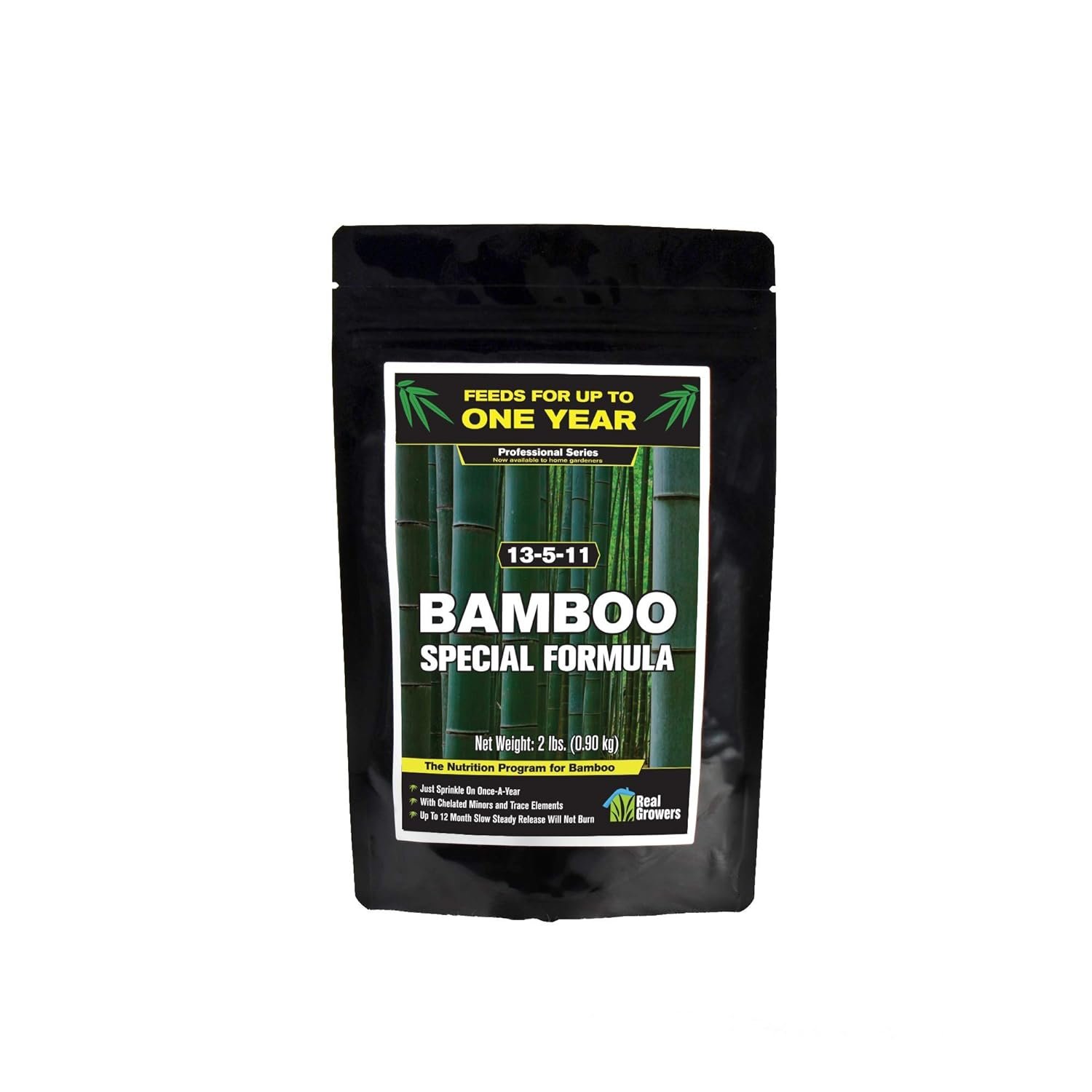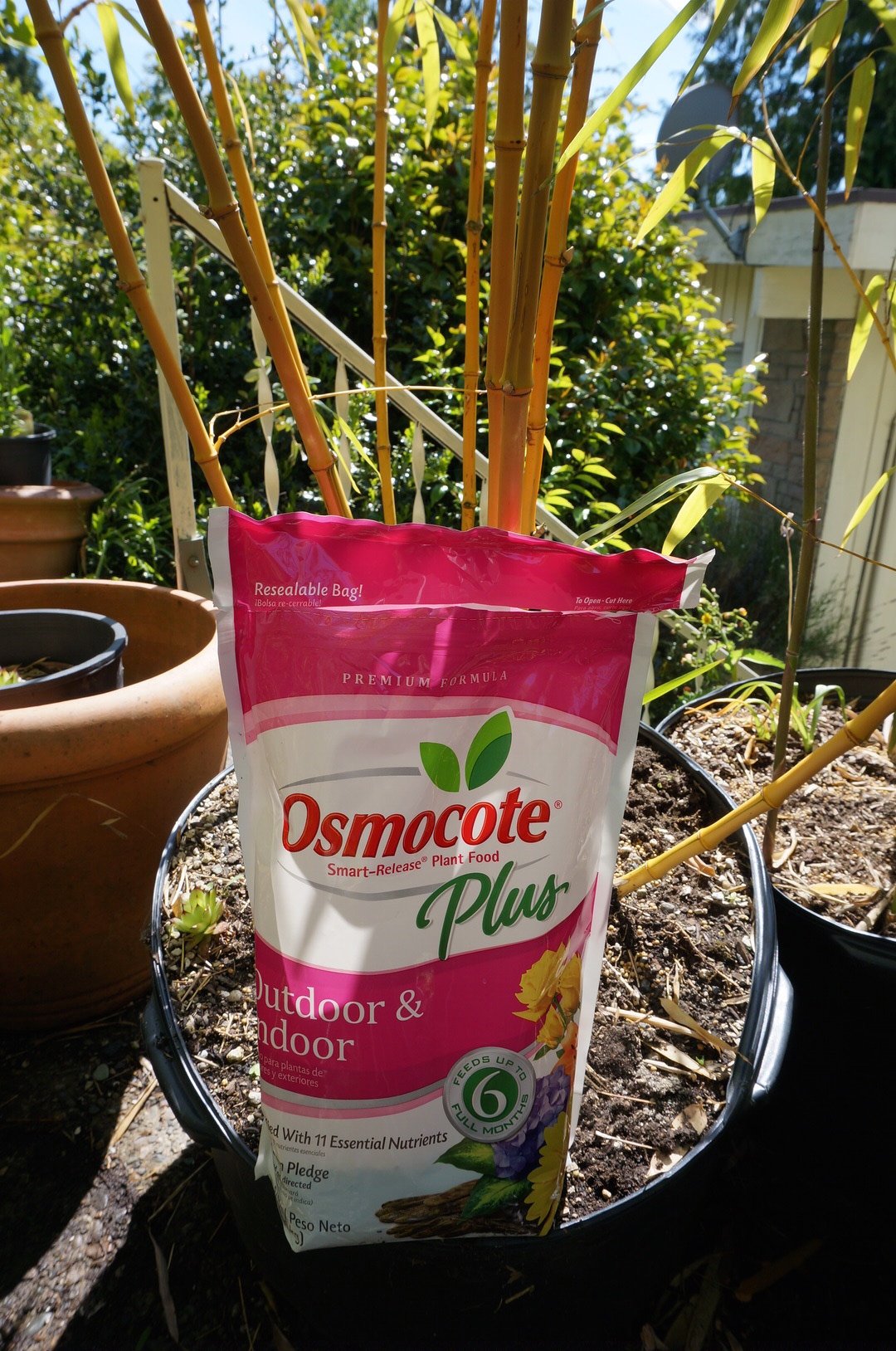When to Plant
Bamboo is a sturdy plant that can be planted year round with special seasonal considerations. We stock cold hardy varieties that can endure the lowest Puget Sound temperate winter conditions.
Winter Planting
Pros:
Early Establishment: Planting in late winter allows bamboo to establish its root system before the onset of spring growth, giving it a head start.
Little/no Watering Required
Special considerations:
High winds, frosty temps and snowfall can require staking and special precautions.
Delayed Growth: During winter, bamboo plants are dormant above ground. Bamboo planted off-season will look the same for months until Springtime.
Spring Planting
Pros:
Optimal Growth Conditions: Spring offers favorable conditions for rapid growth, with warmer temperatures, frequent showers and increased sunlight.
Wide Selection: We can typically source and provide the widest amount of varieties and sizes in the Spring.
Establishment Before Summer: Planting in early spring allows bamboo to establish a strong root system before the heat of summer arrives.
Special considerations:
Watering needs: Bamboos are at the cusp of producing new canes in the Spring, keep an eye out for unseasonal dry spells and water accordingly.
New shoots are fragile: Plant as early as possible to prevent damaging tender new canes.
Summer Planting
Pros:
Immediate Growth: Bamboo planted in summer can experience immediate growth due to the abundance of sunlight and warmth.
Special considerations
Dead of summer time isn’t the best time to plant anything in full sun. Apply an abundance of top dressed mulch if it’s in the ground and water heavily.
High Water Demand: Summer planting requires vigilant watering to prevent dehydration and stress on newly planted bamboo. Especially late summer when drought conditions prevail.
Heat Stress: Extreme heat can stress young bamboo plants, particularly if they haven't had sufficient time to establish their root systems or acclimate to increased sunlight.
Fall Planting
Pros:
Cooler Temperatures: Fall planting takes advantage of cooler temperatures, reducing stress on plants and minimizing water needs.
Soil Moisture Retention: Fall rains help keep soil moist, aiding in the establishment of newly planted bamboo.
Early Establishment: Bamboo planted in fall has the opportunity to establish roots over the winter months, ready for vigorous growth in spring.
Special considerations:
Limited Growth: Bamboo planted in fall may show limited growth before entering dormancy for the winter.
Limited Selection: Availability of bamboo varieties may be reduced as nurseries prepare for winter.
Soil Composition
We offer 1.5 cu ft bags of formulated bamboo soil composed of: aged fir bark, composted chicken manure, worm castings, pumice, loam and feather meal. Excellent for planter boxes and as soil ammendment. $15/bag
Well-Drained Soil: Bamboo prefers well-drained soil that prevents water-logging. While it thrives in moist conditions, stagnant water around the roots can lead to rot and other issues. Sandy loam or loamy soils are generally ideal for bamboo cultivation.
Nutrient-Rich Soil: Like all plants, bamboo requires essential nutrients for robust growth. Amending the soil with organic matter such as compost, lawn clippings or dried manure will provide the necessary nutrients and improve soil structure. Seasonal applications of balanced fertilizer will supplement the soil's nutrient content.
pH Levels: Bamboo typically prefers slightly acidic to neutral soil, aka typical PNW soil composition.
Aeration: Adequate aeration is crucial for healthy root development. Compacted, clay rich soils can impede root growth and limit the plant's overall vigor and should be heavily amended with compost.
Moisture Retention: While bamboo thrives in well-drained soil, it also benefits from consistent moisture. Mulching around bamboo plants helps retain soil moisture, regulates soil temperature, and suppresses weed growth. Organic mulches like wood chips or straw are excellent choices.
Fertilizer
Your bamboo will look notably healthier and vibrant with optimum cane, branch and leaf production when given dosages of fertilizer. That said, don’t worry if you forget! Bamboo planted in good soil will still thrive, but even more so with a boost of nutrients.
When applying fertilizer, more is not better. Excess fertilizer washes away, no need to fertilize during the months under 50°
Pots and containers:
It’s especially important to replenish nutrients when growing bamboo in containers.
There’s a variety of bamboo specific fertilizers to choose from. We use and recommend the Bamboo Garden Fertilizer, but any of them applied at the beginning of Spring and later in the Summer will boost vigor.
Planted in the ground:
Bamboo planted in nutrient rich, composted soil will produce healthy growth for years. Adding an inch of natural compost or combination of aged manure, bone or feather meal, worm castings etc early Spring is ideal.
Unraked bamboo leaves left to compost return silica and essential nutrients.
More important than fertilizer is an adequate supply of water during dry seasons.
Watering
Bamboo grown in the temperate NW usually gets enough natural rainfall from November to mid-Spring. The fast transition to hot summer temps and drought conditions occurs when bamboo is developing new canes and needs water the most. Generally speaking:
60° - 70°, soak the roots for 1 min, 1x week.
70° - 80°, 1 minute soak, 2x week
80°+, 1 minute soak, 3x week
Bamboo is pretty drought tolerant, especially when it’s growing in the ground in a larger area, but there’s a visible difference in the health and development of well watered bamboo.
Leaf curl means that your bamboo needs water and/or needs more shade.
A general minimum summer watering regimen is a 1-2 minute soak every 2-4 days, depending on container size and sun exposure.
Equally important as adequate watering is good drainage.
!/2” or smaller holes are small enough to prevent most bamboos from escaping. Aluminum tanks should be bottom drilled with a few dozen holes to prevent pooling throughout winter.
Ideally, allow the top 1-2” of soil to dry out in between watering to encourage root formation.
Morning and evening are the best times of day to water during hot weather to hydrate the leaves before temperatures rise. Nor is there any harm watering mid-day.
Sun Requirements
The annual Puget Sound Northwest weather cycle is typically rain and clouds until June transitioning to 80° summer-to-late fall blue skies.
Most varieties can tolerate the few months of full sun in conjunction with frequent light watering. All varieties of Phyllostachys and most running bamboos are contenders if no shade is available.
Shade
A few wide leaf varieties and clumping bamboos can grow in full shade, but low-light conditions tend to produce anemic growth and invite pest insects.
Many bamboos grow naturally under forest canopy and enjoy protection from hot, overhead sun. If you have access to dappled shade, varieties with fine features and delicate branches/leaf structures will look their best.













